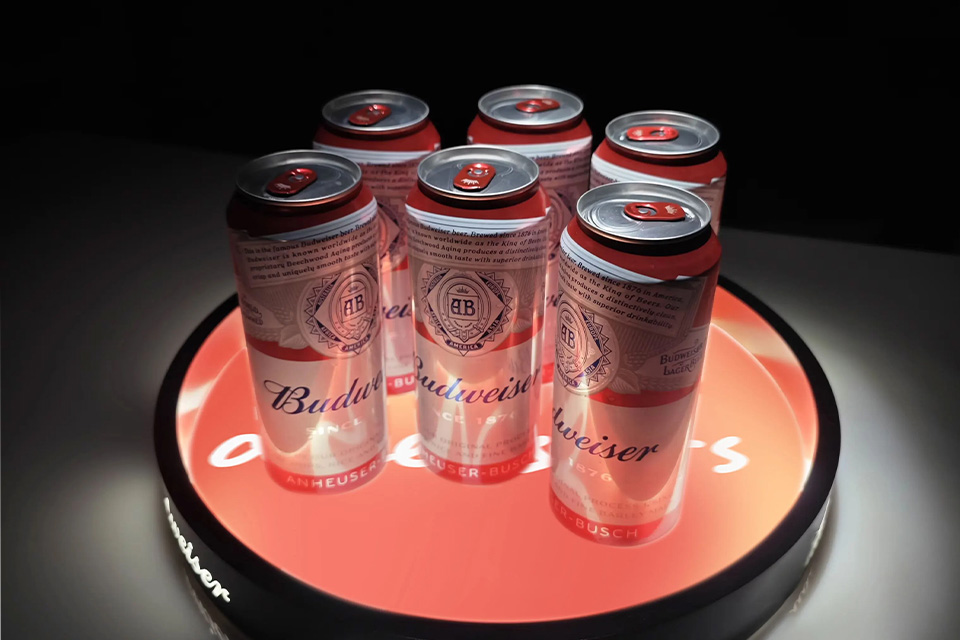Summary
Acrylic countertop displays are essential fixtures in retail environments, designed to showcase products effectively while enhancing brand visibility and customer engagement. Their versatility and aesthetic appeal make them popular choices across various industries, including fashion, cosmetics, and food retailing. Notable for their clarity and modern design, acrylic displays help merchandise stand out, attracting attention and potentially increasing impulse purchases among consumers.
Table of Contents
The positioning and design of these displays are crucial factors that influence their effectiveness. Retailers must carefully consider key elements such as placement in high-traffic areas, the grouping of related products, and the use of effective signage to create an engaging shopping experience. Strategies like optimizing lighting and analyzing customer flow can further enhance visibility and accessibility, fostering a conducive environment for shopping and driving sales. These considerations have sparked ongoing discussions within the retail industry about best practices and innovative approaches to display design.
However, the use of acrylic countertop displays is not without its challenges. Common mistakes, such as cluttering the display space or neglecting customer flow, can significantly undermine their intended purpose. Retailers often grapple with balancing creativity and functionality, ensuring that displays are both visually appealing and easy to navigate. The rising emphasis on sustainability and eco-friendliness has also led to debates on material choices and their environmental impact, prompting some brands to seek alternatives that align with contemporary consumer values.
Overall, the successful implementation of acrylic countertop displays hinges on a comprehensive understanding of design principles, customer behavior, and strategic placement. By adhering to best practices and continually adapting to the evolving retail landscape, businesses can maximize the effectiveness of their displays and enhance customer satisfaction, ultimately leading to increased sales and brand loyalty.

Factors to Consider
Selecting the ideal material for acrylic countertop displays is a multifaceted decision that hinges on understanding and balancing a variety of key factors. It requires a keen assessment of the product type, ensuring the material chosen complements and enhances the product’s features while resonating with the brand’s image and values, thereby contributing to a cohesive and compelling brand identity.
Budget Constraints
Budget constraints play a pivotal role in the selection process, necessitating a cost-effective choice that does not compromise on quality or aesthetic appeal. Retailers must navigate their financial limitations while ensuring that the display materials align with their branding and marketing objectives.
Environmental Impact
In today’s market, environmental impact considerations are increasingly important. Retailers must reflect a commitment to sustainability, which can appeal to eco-conscious consumers. Choosing materials that are environmentally friendly not only supports sustainability goals but also enhances the brand’s reputation among increasingly discerning shoppers.
Identifying the Target Audience
Identifying the target audience is critical for tailoring an acrylic countertop display that resonates with the intended customer base. Understanding the demographics, preferences, and buying behaviors of the audience enables the creation of a display that aligns with their interests and needs, ultimately driving sales.
Product Selection
Selecting which products to display involves careful consideration of items that will appeal to the identified target audience, fit within the assessed space, and align with the business’s sales objectives. Prioritizing high-margin items, new arrivals, and impulse buys can significantly enhance the display’s effectiveness.
Best Practices for Signage and Messaging
Clear and concise messaging in signage is essential for communicating vital information quickly and effectively, aiding in customer understanding of products or offers. Incorporating brand elements into signage reinforces brand identity, promoting consistency across all customer touchpoints. Effective signage design uses contrasting colors to make messages visible and readable, capturing customer attention effectively.
Accessibility Considerations
Ensuring accessibility in countertop display layouts is crucial for creating an inclusive shopping environment. Retailers should consider height and reach guidelines to ensure products are within easy access for all customers, including those using mobility aids. Implementing tactile elements for the visually impaired further enhances the shopping experience by making information easily accessible to everyone.
By carefully weighing these factors, retailers can select the most suitable materials and design features for their acrylic countertop displays, effectively showcasing their products while aligning with their brand and financial goals.

Best Practices for Positioning
Effective positioning of acrylic countertop displays is essential to maximize visibility and encourage customer engagement. Implementing best practices can significantly enhance the shopping experience and drive sales.
Optimize Placement
Strategic placement of displays is fundamental. It is recommended to position acrylic stands in high-traffic areas such as entrances, checkout counters, and end caps, where they are likely to attract attention from customers as they navigate the store. Displays at eye-level are particularly effective, as items positioned within the direct line of sight are more likely to capture shoppers’ interest and encourage impulse buys.
Group Related Products
Grouping related products together can simplify the shopping process for customers and enhance their overall experience. This strategy not only facilitates finding complementary items but also promotes additional purchases, thereby increasing the average transaction value. For instance, creating themed bundles like a “new parent survival kit” can resonate with shoppers and position the brand as a thoughtful resource.
Utilize the Rule of Three
Employing the rule of three in display arrangements can improve visual appeal and product memorability. Items grouped in odd numbers, particularly threes, tend to attract more attention and create a more engaging display. This principle can be applied to both product placement and display configuration.
Enhance with Lighting
Strategically using lighting can further enhance the visibility and attractiveness of acrylic displays. Proper lighting not only draws attention to featured products but also contributes to the overall ambiance of the display, making it more appealing to customers.
Consider Customer Flow
Analyzing customer flow within the store is crucial for determining the best display locations. Understanding how customers navigate the space allows for more effective placement of acrylic displays to ensure they capture maximum attention during the shopping experience.
By adhering to these best practices for positioning acrylic countertop displays, retailers can create a more engaging shopping environment that effectively drives sales and enhances customer satisfaction.

Common Mistakes
When positioning acrylic countertop displays, avoiding certain common mistakes can significantly enhance their effectiveness and appeal. These pitfalls can undermine the display’s ability to attract attention, engage customers, and ultimately drive sales.
Cluttering the Space
One of the most significant errors is cluttering the display space with an excessive number of products. A cluttered countertop can overwhelm customers, making it difficult for them to focus on individual items. This not only detracts from the appeal of key products but can also hinder overall sales performance. Maintaining a clean and organized display allows customers to easily navigate and find what they need.
Ignoring Customer Flow
Another frequent mistake is failing to consider customer flow when positioning displays. It is essential to analyze how customers move through the retail space and to place displays in a manner that aligns with these patterns. Neglecting to do so can lead to poor visibility and reduced interaction with the display.
Inadequate Signage
Clear and concise signage is crucial for effectively communicating product information and promotional offers. Many displays suffer from insufficient signage, which can leave customers confused and uninformed about the products being offered. Well-designed signage enhances customer understanding and facilitates informed decision-making, ultimately encouraging purchases.
Overcomplicating Design
While creativity in display design can be beneficial, overcomplicating the layout can lead to frustration. Displays should be intuitive and easy for customers to navigate. Complex designs can deter customers and reduce their willingness to engage with the products. Striking a balance between visual appeal and functionality is key to effective display design.
Failing to Adapt to Environment
Finally, neglecting to adapt the display to the specific environment of the retail space can result in missed opportunities. Each store has unique challenges, such as lighting, layout, and customer demographics. A display that looks great in a design render may not translate well to the actual retail environment if these factors are not taken into account. Therefore, conducting thorough research and observation within the store prior to implementing a display can yield better results.

Case Studies
Successful Implementations of Acrylic Countertop Displays
Acrylic countertop displays have proven to be effective tools for enhancing product visibility and driving sales in various retail environments. Several notable case studies illustrate their impact.
Grocery Store Case Study
A major grocery store collaborated with Amitoje India to design an acrylic countertop display that prominently featured select products. This strategic placement led to a remarkable 30% increase in sales of the showcased items within just a few weeks, demonstrating how well-executed displays can capture customer attention and stimulate impulse purchases.
Retail Brand Revamp Case Study
Another retail brand undertook a significant revamp of its product presentations using countertop displays. This initiative resulted in a noticeable spike in impulse purchases and heightened customer engagement. By focusing on high-quality designs and effective product placement, the brand successfully enhanced the shopping experience and increased sales.
Key Takeaways from the Case Studies
These case studies underscore several critical strategies for optimizing acrylic countertop displays:
- Design Quality: High-quality designs attract attention and communicate brand values effectively, which can enhance customer perceptions and increase engagement.
- Product Placement: Strategic positioning of displays—such as at checkout areas or high-traffic locations—can significantly influence purchase decisions and drive impulse buys.
- Experimentation and Adaptation: Retailers are encouraged to test different display configurations and placements to determine what resonates best with their target audience, adapting their strategies based on observed customer behaviors and sales data.
Design Principles
Balance and Symmetry
Achieving balance and symmetry in the arrangement of display elements is key to creating a visually appealing presentation. An organized and harmonious display avoids clutter and ensures that each product is easily visible, enhancing the overall shopping experience. A well-structured display guides the customer’s eye and facilitates effortless browsing.
Purpose and Vision
To create effective acrylic countertop displays, it is essential to start with a clear vision of the display’s purpose. Understanding whether the display is meant to highlight a new product, create an interactive experience, or encourage impulse purchases will influence the design, materials, and layout significantly. Defining the goal before the design process ensures that the display effectively meets its intended function.
Collaboration with Fabricators
Working with an experienced fabricator can greatly enhance the quality of the display. Companies like Acrylic Design Associates offer expertise in building prototypes that are precise and functional, which is crucial for a successful retail environment. The right partnership can also influence the project’s overall timeline and cost, ensuring that the final product meets brand standards while being durable enough for various retail settings.
Testing and Feedback
Once a prototype is created, it should be tested in a real retail environment. This testing phase evaluates key factors such as visibility, durability, usability, and functionality. Gathering feedback from these tests allows for necessary adjustments and iterations, ensuring that the final display performs well on the sales floor and engages customers effectively.
Design Flexibility
Utilizing adjustable product risers and multi-tiered merchandisers can create visually dynamic and organized displays. These elements allow for various product heights, creating depth and hierarchy, while maximizing counter space by utilizing vertical areas. Such flexibility ensures that the display can accommodate an evolving product lineup and seasonal promotions, making it a cost-effective solution for retailers.
Material and Style Considerations
Selecting the right materials for the display is crucial, as they should resonate with the brand’s identity and values. The choice of materials can convey messages of luxury, modernity, or eco-friendliness, reflecting the brand’s commitment to sustainability, which is increasingly important to consumers. Additionally, balancing style with durability is vital; while custom displays can elevate brand perception, standard options may suffice for simpler needs.
Modular and Scalable Design
Designing displays with flexibility in mind allows for customization across different retailers and locations. It’s crucial to consider logistics for shipping, assembly, and installation, ensuring that the design can be scaled and replicated easily across various store formats. This foresight protects the investment made in the displays and maintains a consistent brand experience.
By following these design principles, retailers can create acrylic countertop displays that not only showcase products effectively but also resonate with consumers, leading to increased engagement and sales.
Techniques and Strategies for Enhancement
Visual Appeal
To create an engaging acrylic countertop display, it is essential to embrace eye-catching visuals that highlight key features and benefits of the products on display. Utilizing lighting techniques, such as spotlights and LED strips, can significantly enhance product visibility and appeal, creating an inviting atmosphere that encourages customer interaction.
Arrangement and Organization
Effective arrangement and organization are crucial for maintaining a clutter-free display that allows each item to shine. Strategies such as grouping like items together, layering heights with adjustable product risers, and maintaining a balanced and symmetrical layout can guide the viewer’s eye naturally across the display. For example, placing products at a 15-degree slant can improve visibility by an average of 27%. Additionally, leaving space between items can prevent an overcrowded appearance, making the display more approachable and inviting.
Interactive Elements
Incorporating interactive elements can significantly enhance customer engagement. This can include features like QR codes, augmented reality markers, or even hands-on product demonstration stations that educate customers about the brand and its offerings. By blending physical and digital elements, retailers can create a more immersive shopping experience that resonates with consumers, particularly tech-savvy ones.
Effective Signage
Clear and concise messaging in signage is vital for conveying essential information quickly and effectively. Utilizing contrasting colors enhances visibility and helps messages stand out, reinforcing brand identity and promoting consistency across customer touchpoints. Furthermore, thoughtful signage design can guide customers and make the shopping experience more informative and engaging, increasing the likelihood of purchase decisions.
Rotation and Flexibility
Regularly updating and rotating displays—changing themes monthly or quarterly—can keep the shopping experience fresh for returning customers. Utilizing adjustable product risers and flexible display designs allows retailers to adapt displays to accommodate varying product sizes or seasonal promotions, ensuring that displays remain relevant and engaging over time.
By implementing these techniques and strategies, retailers can significantly enhance the effectiveness of acrylic countertop displays, driving customer engagement and ultimately increasing sales.

















